Elecrow ThinkNode M2 is yet another Meshtastic handset for off-grid messaging and GPS coordinate sharing based on an ESP32-S3 module providing Bluetooth connectivity to a smartphone, and a Semtech SX1262 LoRa transceiver for low-power long-range wireless connectivity.
It’s an evolution of the ThinkNode-M1, itself similar to the LILYGO T-Echo, based on a Nordic Semi nRF52840 Bluetooth module and SX1262 LoRa transceiver with an external antenna housed in a 3D printed enclosure. The new ThinkNode M2 is very similar but features a more powerful ESP32-S3 module instead, relies on a 1.3-inch OLED display instead of a 1.54-inch e-paper display, and is housed in an ABS plastic case.
ThinkNode M2 specifications:
- Core module – ESP32-S3 module (looks to be ESP32-S3-WROOM-1 on the photo below)
- SoC – ESP32-S3
- CPU – dual-core 32-bit microcontroller @ 240MHz
- Memory – 512KB SRAM, 8MB PSRAM
- Storage – 384KB ROM 4MB flash
- Wireless – 2.4GHz Wi-Fi and Bluetooth 5.0 (LE)
- Antenna – PCB antenna
- Preloaded with Meshtastic firmware
- SoC – ESP32-S3
- Display – 1.3-inch OLED with 128×64 resolution (SSH1106 driver)
- Wireless
- WiFi 4 and Bluetooth 5.0 on ESP32-S3 module
- LoRa
- SX1262 LoRa transceiver with support for 868 and 915 MHz frequency bands
- IPEX antenna
- USB – USB 2.0 Type-C Interface with USB to UART
- Expansion – 12-pin header with 9x GPIO, UART, ADC, TOUCH, USB, 5V, 3.3V, GND
- Misc
- Power, Function, Reset, and BOOT buttons
- Power and charging LED indicators
- Buzzer
- Power Supply
- 5V/1A via USB-C port
- 3.7V/1,000 mAh Lithium battery
- Power consumption – Up to 217mA, about 136mA when the display is off
- Dimensions & Weight
- Without case – 51.5 x 37 x 9.5mm | 30 grams
- With ABS plastic case – 88.4 x 46 x 23mm | 50 grams
- Temperature Range – Operating: -10 to 50°C; storage: -20 to 60°C
- Relative humidity – 10% to 95%, @ 40°C (non-condensing)
The ThinkNode M2 device ships with a USB-A to USB-C cable and a user manual. Like any other Meshtastic device, you’d connect to it through the Meshtastic app for Android or iOS. Elecrow still provides a wiki with hardware documentation and instructions to get started.
I’m not sure about the technical advantages of switching from nRF52840 + e-paper to ESP32-S3 + OLED for a Meshtastic handset since the power consumption will be higher, and the E-Ink will be easier to read outdoors in most cases. I suppose one of the advantages is WiFi connectivity for hosts that lack Bluetooth support, and ESP32 is usually cheaper. It’s not the first ESP32-S3 + SX1262 hardware platform around, and other solutions include the SenseCAP Indicator, XIAO ESP32S3 for Meshtastic & LoRa devkit, and T-Watch S3 Plus smartwatch, but none of those are complete handsets. The unPhone and the T-Deck Plus would match, but they are not in the same price range.
The Elecrow ThinkNode M2 is sold on AliExpress for $54.99 with free shipping, and it’s indeed cheaper than the $69.99 price tag asked for the previous generation ThinkNode M1 or the $81 for LILYGO T-Echo on Amazon.

Jean-Luc started CNX Software in 2010 as a part-time endeavor, before quitting his job as a software engineering manager, and starting to write daily news, and reviews full time later in 2011.
Support CNX Software! Donate via cryptocurrencies, become a Patron on Patreon, or purchase goods on Amazon or Aliexpress


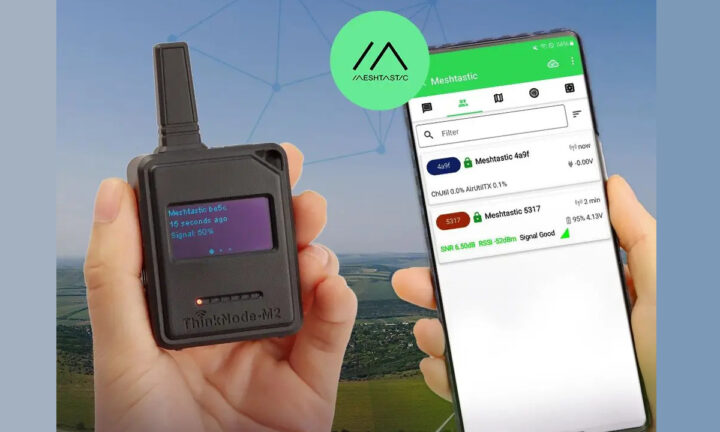
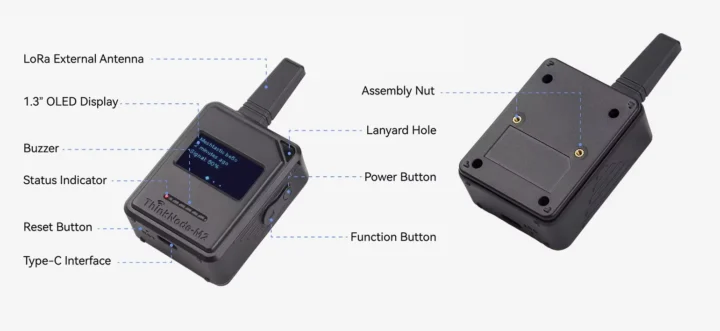
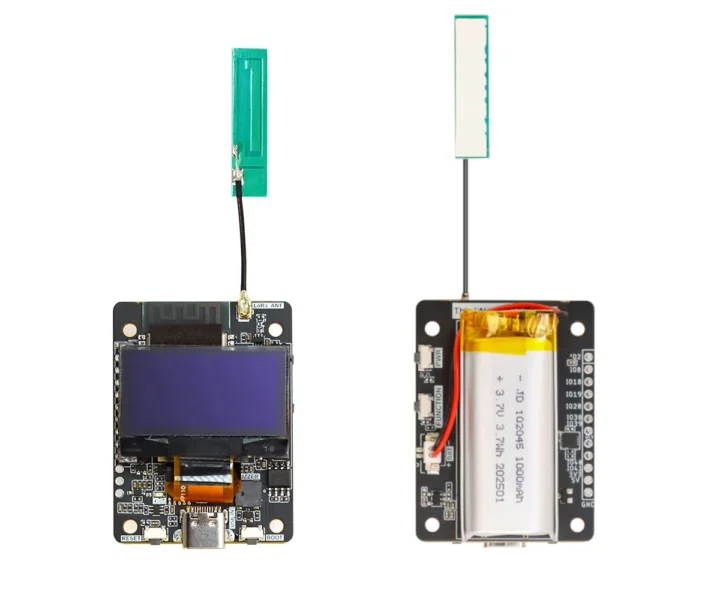
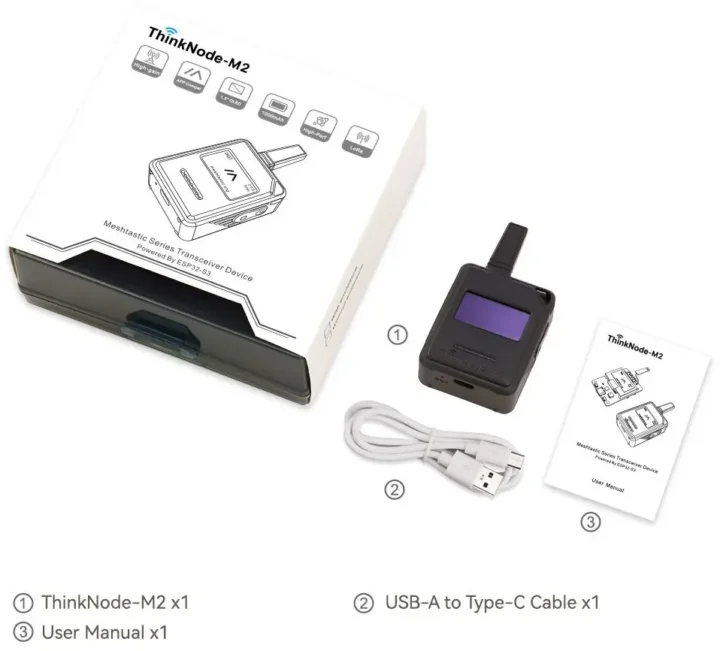
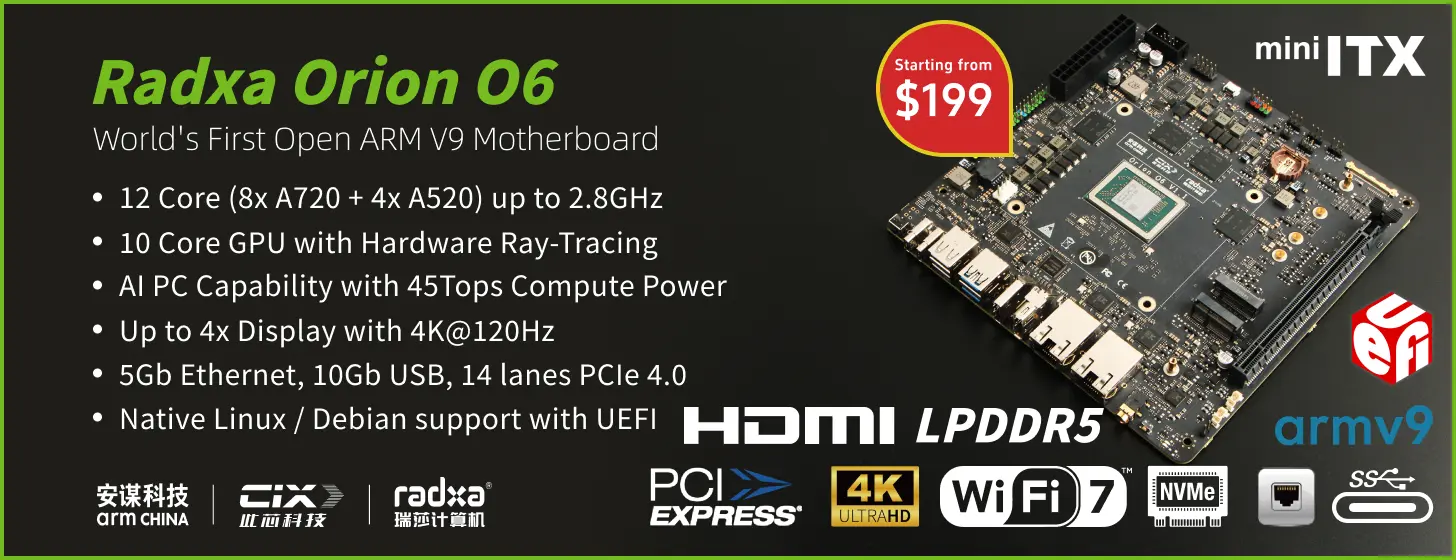


What is actually the use case for such a thing?
Messaging and GPS coordinates sharing in areas where there’s no cellular connectivity.
Hiking is one use case, and being able to communicate after natural disasters is another.
[ Do ‘Meshtastic’ devices have individual IDs (‘exclusive/private’ point-to-point connections, prob. not) or are these broadcasting devices to whomever is on that frequency(-ies)?
Btw, “It’s important to note that each device is capable of supporting a connection from only one user at a time.”(?) (thx) ]
Note about “one user at a time” is about one device can be connected to one phone app via Bluetooth or WiFi, so it can’t be used as router for few phones.
Point to point is supported, application can create “channels” which you set to same “key” for devices to communicate. So everyone with your key can communicate with encryption. You can create or join multiple groups at the same time, like in Teams, default one have no key, so everyone on this frequency can reed all messages on it.
What is good in this – if someone have no key for your group he can’t reed it, but can retransmit, so if your peer-to-peer setup can’t reach each other directly but have someone’s device in between on same freqency – messages will be retransmitted by it.